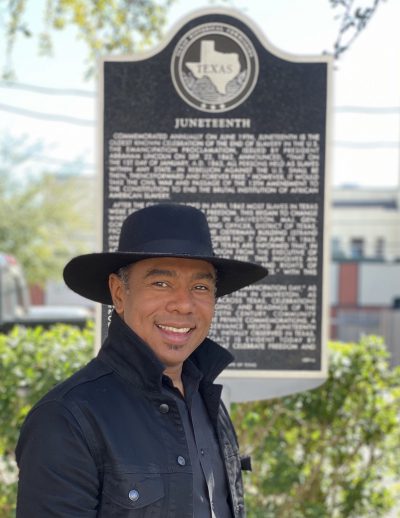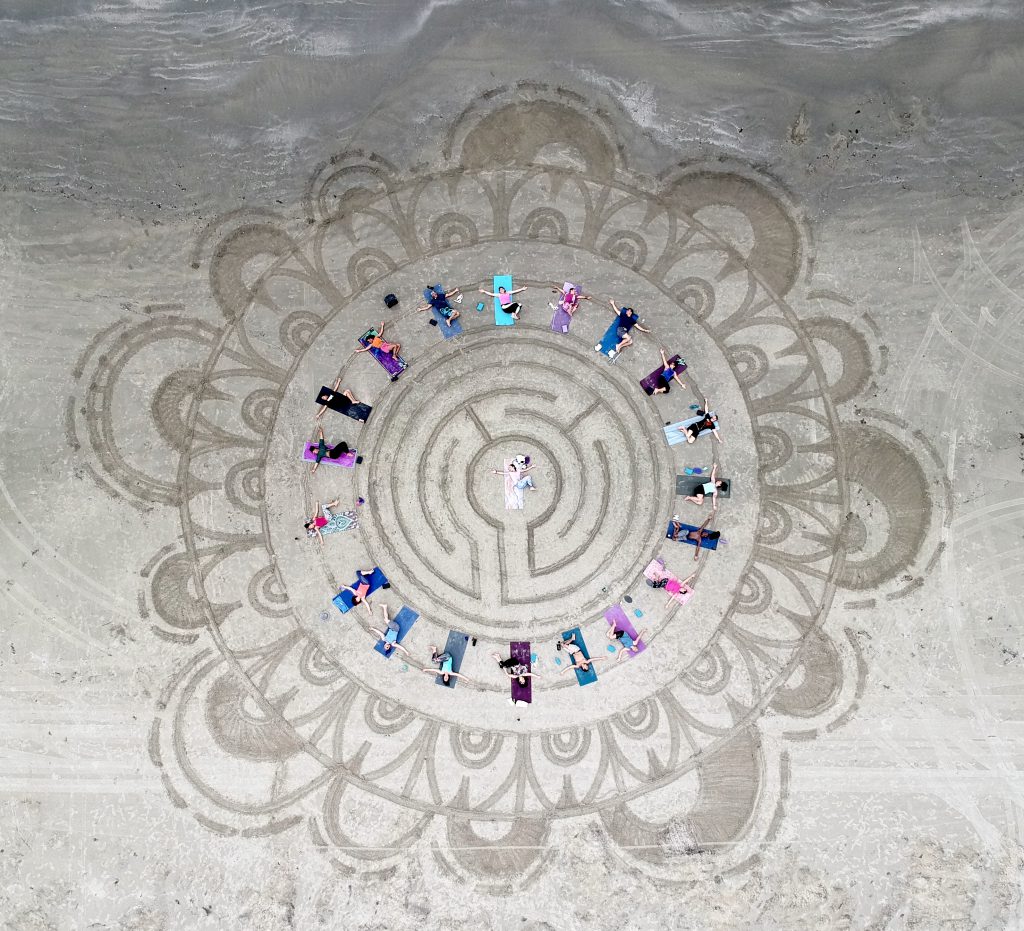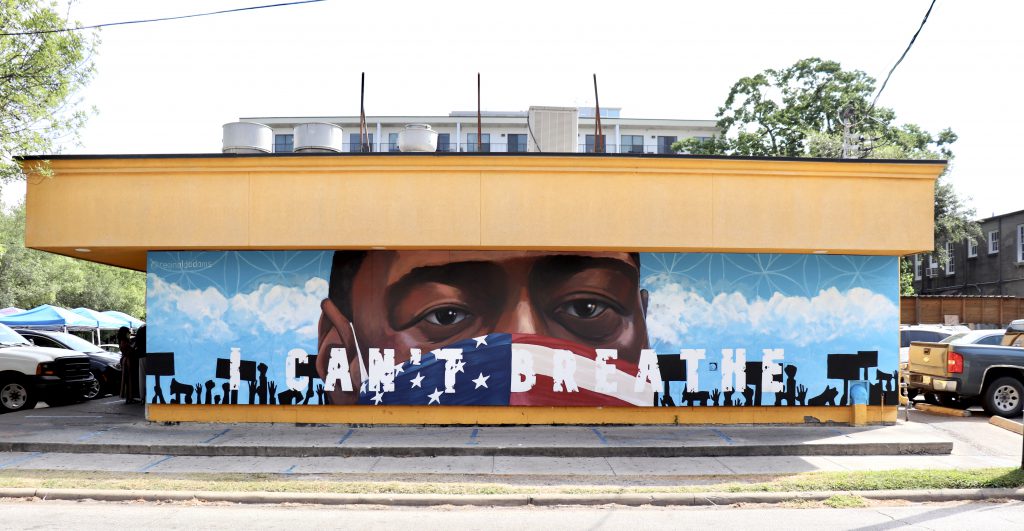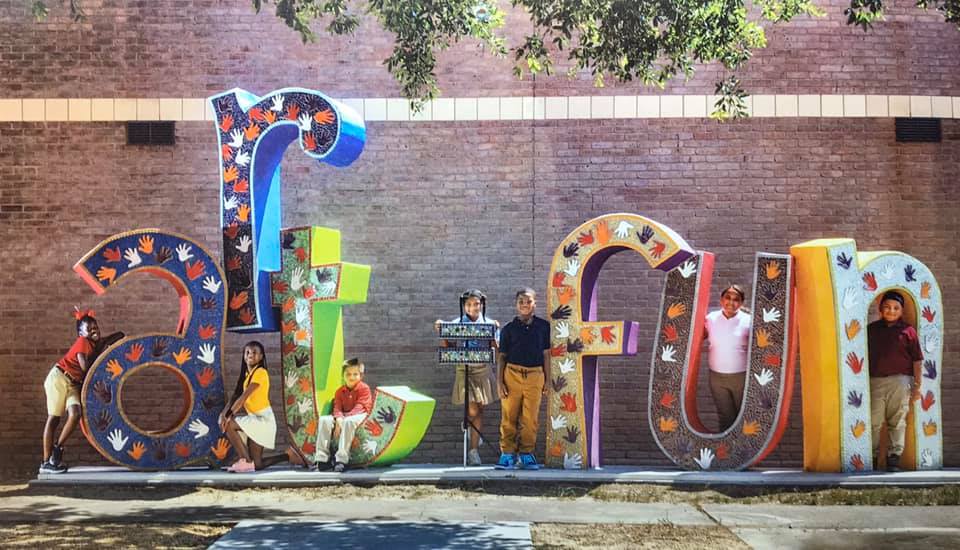In 2020, artists have had to get creative to engage in dialogue about the most critical issues. Social distancing has made connecting to communities more difficult. It is more important than ever to communicate with one another over the issues we face.
Local Houstonian artist, Reginald Adams, has been doing just that. Earlier this year, in June, he created a beautiful memorial mural to George Floyd. As the pandemic stretched onwards, Reginald teamed up with Fort Bend County to launch the Diversity over Division Initiative. We sat down with Reginald to discuss his role as an artist during this project and how it is connected to the African American community.
Art for the Artist

Reginald is not new to creating work for community groups. When he moved to Houston in 1990, his goal was to connect with the Houston community and begin working on art that means something to everyone. He established the Museum of Cultural Arts Houston in 1999, which became the “only museum of its kind in the world solely dedicated to the design and creation of community-based public art projects and programs” (Reginald’s website). In 2014, he became invested in creating “Sacred Sites”, which evolved into a youth program that does projects locally and in foreign countries. The collaborations fostered through the programs are integral to the Houston community, serving as symbols of our cultural diversity and vast creativity.
Reginald works through Reginald Adams LLC, his Public Art & Design firm based in Houston, Texas. He feels lucky to work with 6 other highly professional artists in their own right. The “collective energy” of the group is poured into the work they do together. In some ways, Reginald says, the process of creating together is “more important than the art itself.”
Inspiration from his work stems from his excitement for the future. He dreams about every project he works on, fueling his energy, and focusing on the work’s intention. “I’m living up to my dreams,” he states. “I have a lot to look forward to when I wake up in the morning.” Though it can be a challenging life to lead, he leads every day with excitement for the work he gets to create.
Putting the Puzzle Pieces Together

The process of organizing large art projects can be daunting. Truly, arranging large murals from mosaic has to be a coordinated group effort! How does he do it?
Well, ever since he was little, Reginald loved playing with puzzles. It was satisfying for him to take small pieces and work them together with his brother. It would always be a group effort. He says he channels that “youthful naivety” of childhood and combines it with his “tactical training, education, and experience” to influence the way he works with his artists.
His work expounds in metaphors. The artists involved in the project invest their collective creativity into the work, which usually serves as a centerpiece for a communal gathering place. The group serves the group.
Activism within Art

When Reginald moved to Houston in 1990, he met Michelle Barnes, founder and Executive Director of the Community Arts Collective. Michelle was a mother figure to him at the time. She opened the door for him to experience and understand the meaning behind creating public art. Activism worked into the economy of his work at first through teaching and sharing his methodology. He felt fulfilled by instructing others in the creation of art. This process allowed him to meet people – particularly young people – who were poor, incarcerated, and otherwise marginalized.
By working in the community so extensively, Reginald quickly “learned that public art was the best way to expose art to the masses who would never go to traditional art spaces.” This is the most exciting part of the work for Reginald. It’s more fulfilling for him to drive through neighborhoods to see his work than walk through a gallery and see his work hung up on the wall.
As an African American Artist

Of course, there are challenges Reginald faces solely because he is an African American. He is stereotyped based on misperceptions that society frames around what a black man can – or should – do. “I find myself in places where the stereotypes precede my introduction,” he explains.
“People assume I will act a certain way or talk a certain way. Imagine if everyone you meet has something they subconsciously think about you that isn’t true before they even meet you. And you have to constantly overcome that. It’s like an x-ray machine you have to pass through to prove you’re worthy of working with.”
Although challenging, Reginald has been able to build his reputation through his acts of service. It might be surprising to realize these challenges still affect him in a city as diverse as Houston – but they are even more prevalent this year. “You can’t let it hold you back or let it limit you,” Reginald asserts. “But it’s very real. Very, very real for us.”
What can we do?
This year has been incredibly frustrating for us all. It’s easy to feel like a bystander with little to no ability to impact or change the issues we have been witnessing. Despite this, we absolutely have to try.
Reginald’s advice? “People have to get out of their comfort zones,” he states. “Get involved with people who don’t think like or look like you.” Indeed, these racial divides stem from cultural bubbles that prevent exposure to different cultures and ideas. “We have to adapt to each other and adapt to change,” Reginald says. “The natural order of things is for humans to coexist. No other creature destroys its habitat the way we do” – culturally or physically.
Cultural divides can only be solved by our communities. Through a diverse discourse and exchange of ideas, we open the avenue to greater understanding and appreciation. Through Reginald’s work with Fort Bend County, we hope to make strides in connecting people to one another. Right now, we need to unite and face the uncertain future head-on.
More than just to survive – our goal is to thrive. Together.
All images used provided by the artist.